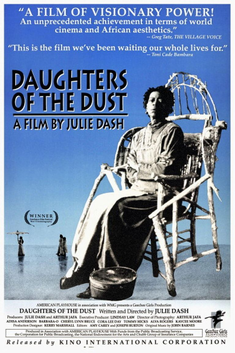Daughters of the Dust to be discussed on an open platform
February 15, 2022
Angela Schwendiman, the Faculty Commons Director/ Africana Studies Director, chose the film discussion to be about the Daughters of the Dust because the plot focuses on women and their views.
“When you see how it’s filmed, the women are always the center focus,” said Schwendiman. “You see the conflicts between the past and the present.”
EWU has held several Black History month events over the past several weeks, and the theme is black-owned. How does the Daughters of the Dust film fit into the theme? Schwendiman said the movie is about ownership of their stories and culture. The movie is told by women who pass on the culture to others.
In this movie, Nana Peazant is the main caretaker of the family. Schwendiman said Nana talks about the connection their family has and in their culture, it is important to preserve the family and keep everyone connected. Nana emphasizes it is important to hang onto the values that keep them connected to one another.
Schwendiman said this movie shows why the ownership of their stories, histories, and culture enables them to overcome any challenges presented to the African people. These individuals were often exploited and oppressed.
“You have to hold onto those values that connect and remind you of your humanity,” -Angela Schwendiman, the Faculty Commons Director/ Africana Studies Director
Schwendiman said Daughters of the Dust is also about how to deal with pain and trauma of the past. The movie shows how to grow and move forward from traumas instead of letting their pain define who they are as a person. One of the characters Ula experiences trauma in her life and Schwendiman said Ula does not want to pretend that slavery and all the atrocities did not happen but embrace them as part of their story.
Schwendiman said this movie talks about the hope of the future. She said Nana talks about letting the pain go and moving forward. It is important to take ownership of the stories and ownership of their families. Nana does not want her family to be defined by their pain.
The Daughters of the Dust film discussion will take place Wed. February 16 from 12-1 p.m. The event will take place in Tawanka Hall Room 215 A/B. The link for the movie is posted on the InsideEWU website. The website states to watch the movie before the event if possible. https://inside.ewu.edu/calendar/?trumbaEmbed=view%3Devent%26eventid%3D563908074
For this discussion, Schwendiman hopes that if people have not watched the film yet, they will become interested. She said the movie is not structured like a classical Hollywood narrative; the plot is about a family who is transitioning to the mainland. The movie consists of recollections, remembrances, hopes, and dreams of the family.
“[The movie] basically records the tradition of the family…” -Angela Schwendiman, the Faculty Commons Director/ Africana Studies Director
“The conflict is centering around Nana…” said Schwendiman. “They are going to lose their identity if they don’t preserve the very things that keep them connected to each other to their ancestors.”
Schwendiman wants students to understand the heart of what the narrative is about because the film is not typically what Hollywood has produced. She said people can ask her questions about the structure or what is actually going on in the film. Schwendiman said the movie does not explain African traditions and beliefs.
The film was written, directed and produced by Julie Dash. She was the first African American woman to be produced in 1991. Schwendiman said the movie was based on her family, and they lived on the island and went through that transition. She said the film was personal in a sense because for the characters, people have not been out of slavery for long due to isolation.
“[The movie] basically records the tradition of the family…” said Schwendiman. “.. and how we can get through things today and the center on African values.”
Schwendiman said the movie includes a lot of symbolism and Dash did not explain many of the symbols. She said it can be challenging but it is important to look for the answers to understand what the symbols mean. It forces people to find the meaning of the movie.
Schwendiman will leave the discussion open and also present some important topics that appear throughout the film. Students will be able to ask questions about the film and the producer.
“I think it is significant that [Dash] was the first woman to produce in 1991 and … that [the movie] is from the perspective of women,” said Schwendiman.








